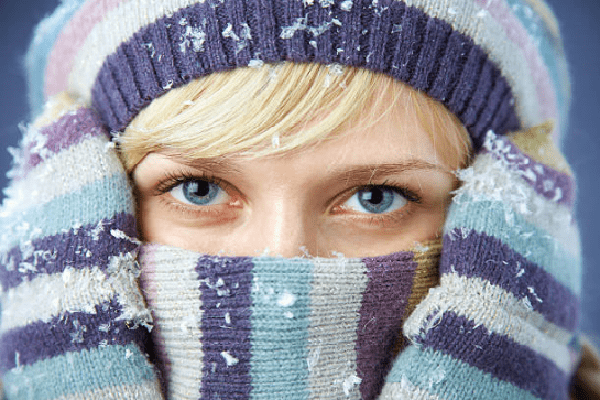Dermatology >>>> Cold dermatitis
Cold dermatitis.

In the midst of cold weather or during the onset of frost, many people notice skin irritation in the open areas of the body (hands, face) in the form of peeling pink spots, which gradually occupy rather large areas. In places of irritation, the skin cracks, itches, aches, microscopic droplets of blood can appear in the cracks. This cold dermatitis (popular household name "cracks in the skin") is one of the manifestations of the body's allergic reaction to the effects of low temperature conditions. Oddly enough, wearing gloves, covering the face with a scarf does not help, and the inflammatory process is gaining momentum. Most often, this kind of dermatitis manifests itself as an allergy to frost, but it can also develop with cold winds, the use of cold water when washing hands, face, is associated with work involving the constant presence of limbs in cold water.
To date, the mechanism for the development of allergy to cold has not been completely elucidated, but scientists suggest that certain groups of cells are related to the development of cold dermatitis - mast cells, which are located in the vicinity of blood vessels and nerve endings in the connective tissue of the skin and mucous membranes lining the gastrointestinal tract and respiratory tract. , and also, presumably, circulate in the lymphoid tissue adjacent to the mucous membranes. A large number of mast cells are located close to the skin surface.
Mast cells are multifunctional cells of the immune system, containing in their arsenal powerful inflammatory mediators - cytokines, histamine, leukotrienes. These cells are participants in adaptive immunity. When exposed to low temperatures (cold air, cold water), mast cells receive a signal and provoke inflammation, making it clear that the surrounding atmosphere is an irritant to the body.
Cold dermatitis is not a hereditary disease, and its manifestations may not be permanent, but if you do not take any measures, then in the places of its appearance, the skin begins to deteriorate, coarse, become covered with a crust, is difficult to heal, over time it can become thinner, become dry and vulnerable to injuries. The slightest friction and abrasions appear on the skin, which are an open gateway for infection that colonizes its surface.
Treatment of cold dermatitis, for a start, involves its differential diagnosis with diseases similar in manifestations: urticaria, atopic dermatitis, allergy to chemical reagents, etc.
If you are not sure if you are dealing with a frost allergy, an allergen test can help identify the disease. But if it was noticed that the skin begins to deteriorate precisely with the arrival of cold weather or as a result of constant contact with cold water, then there is a way to put the skin in order:
Brew the herb in a sequence: one heaped tablespoon per glass of boiling water, let it brew until it cools down, add hot water to the infusion to a temperature at which it will be possible to painlessly hold the limbs or face by dipping them into a bath with infusion (the water should not be barely warm because the skin needs to be steamed). The procedure takes 15-20 minutes. Then dry the skin with a towel and immediately lubricate with a fat cream with a maximum percentage of fat (lanolin hand cream or any other nourishing thick fat cream will do). Vegetable oil, animal fat and other fats and oils not suitable for cosmetic purposes are not suitable for the procedure.
Repeat the baths daily at night (not before going outside) for a week. After a few days, the results should appear - the skin will begin to heal, the redness will fade and gradually go away. Such procedures must be carried out as a preventive measure, if you notice such a feature as cold dermatitis behind the body. Do not trigger inflammation as allergic reactions can be quite persistent and lead to serious skin problems.
If the problem is not resolved with home skin care, then it is recommended to consult a dermatologist or allergist. There are very effective treatments for cold allergies, such as:
- Antihistamine therapy,
- Autolymphotherapy,
- Vitamin therapy with vitamins A and E that promote skin healing .

Read

Read



























